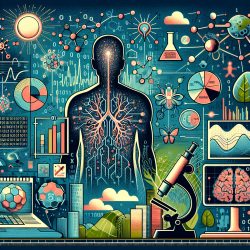Revolutionizing Breast Imaging: The Power of Natural Language Processing (NLP)
In the ever-evolving field of healthcare, the integration of advanced technologies like Natural Language Processing (NLP) is proving to be a game-changer, especially in breast imaging. A recent systematic review titled Natural Language Processing for Breast Imaging: A Systematic Review provides a comprehensive overview of the latest advancements in NLP applications for breast imaging. This blog explores how practitioners can leverage these insights to enhance their clinical practice and outcomes.
Understanding NLP and Its Role in Breast Imaging
NLP is a branch of artificial intelligence that enables computers to understand, interpret, and respond to human language in a valuable way. In the context of breast imaging, NLP is utilized to extract relevant information from clinical notes, radiology reports, and pathology reports. This capability significantly enhances the accuracy and efficiency of breast imaging by automating the extraction of critical data, which supports decision-making and improves patient outcomes.
Key Findings from the Systematic Review
The review highlights several NLP applications in breast imaging, including:
- Cancer Screening and Diagnosis: NLP models can analyze electronic medical records to identify patients at risk for breast cancer by detecting patterns such as symptoms, risk factors, and family history.
- Cancer Staging: NLP assists in extracting detailed information from pathology reports, such as tumor size and lymph node involvement, to accurately stage breast cancer.
- Recurrence Prediction: By analyzing radiology reports, NLP can predict the likelihood of breast cancer recurrence, aiding in timely interventions.
- Information Extraction: NLP efficiently extracts structured information from unstructured text, facilitating better diagnosis, treatment planning, and prognosis.
- Treatment Management: NLP models can predict treatment outcomes and assist in managing patient care by analyzing free-form text from medical reports.
Challenges and Opportunities
While NLP presents numerous opportunities, it also faces challenges such as the need for large, diverse datasets to improve model accuracy and generalizability. Moreover, the integration of deep learning methods with traditional rule-based approaches could enhance the robustness and interpretability of NLP systems.
To address these challenges, researchers and practitioners are encouraged to collaborate on developing and validating NLP models across multiple institutions. This collaboration will help create standardized datasets and benchmarks, ultimately leading to more reliable and widely applicable NLP solutions in breast imaging.
Implications for Practitioners
For practitioners, the adoption of NLP in breast imaging offers a pathway to more efficient and accurate clinical workflows. By automating the extraction and analysis of critical information, NLP reduces manual workload, allowing healthcare providers to focus on delivering high-quality patient care.
Practitioners are encouraged to stay informed about the latest advancements in NLP and consider integrating these technologies into their practice. Doing so will not only enhance diagnostic accuracy but also improve patient outcomes by enabling timely and informed clinical decisions.
Conclusion
The systematic review underscores the transformative potential of NLP in breast imaging. By embracing these technologies, practitioners can significantly improve the quality of care they provide. As the field continues to evolve, ongoing research and collaboration will be crucial in overcoming current challenges and unlocking the full potential of NLP in healthcare.
To read the original research paper, please follow this link: Natural Language Processing for Breast Imaging: A Systematic Review.










